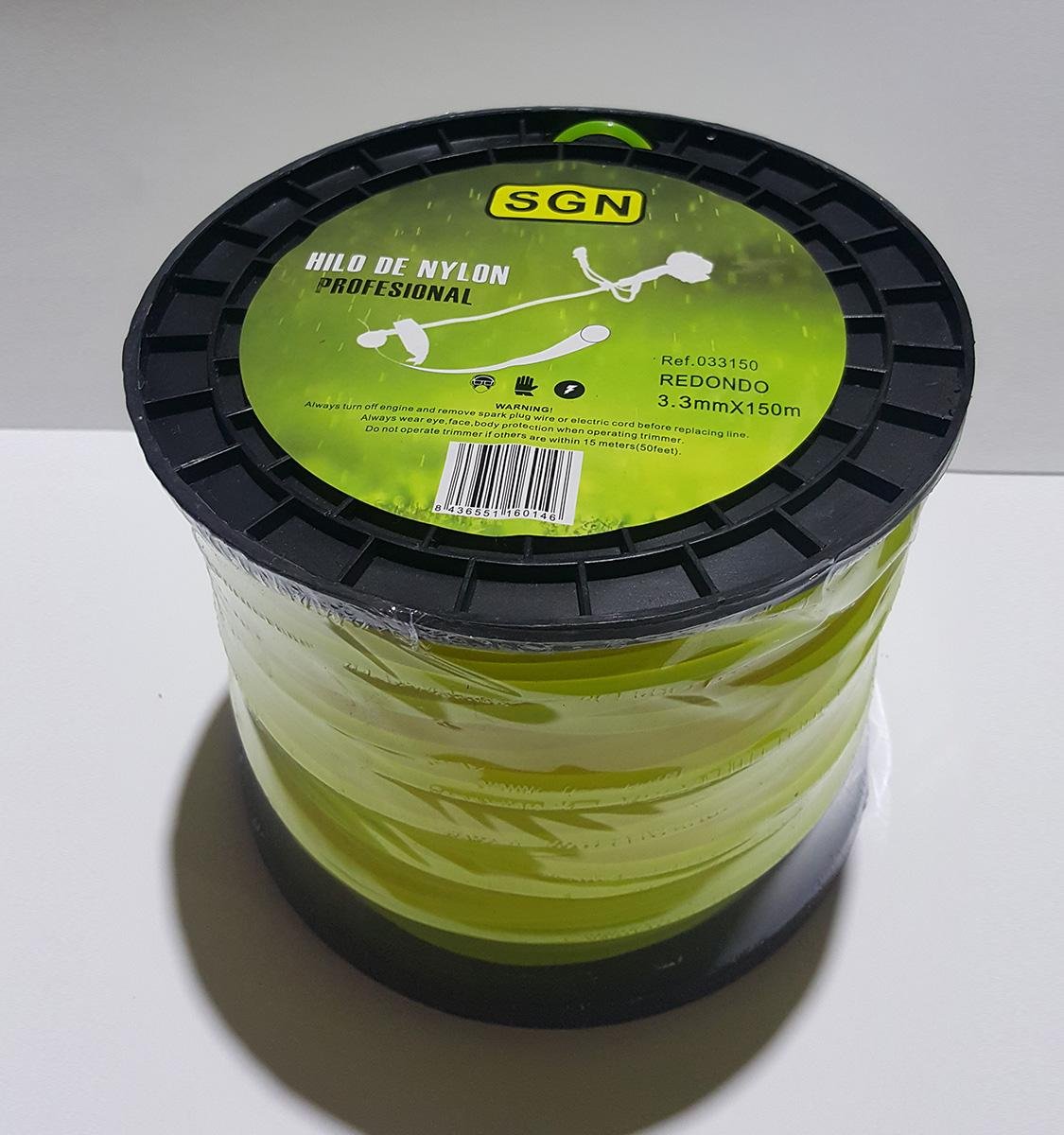
How to Choose the Right Trimmer Line for Your Brush Cutter
The trimmer line is a key component for ensuring efficient brush cutting. Choosing the right line not only enhances the performance of your brush cutter but also optimizes work time and reduces wear on the machine. With so many options available, from different thicknesses to various materials, how can you be sure to select the right line for your job? In this post, we will explain the most important factors to consider.

1. Types of Trimmer Line
There are different types of trimmer line on the market, each designed for a specific type of work. The main types are:
a. Standard Nylon Line
This is the most common type and is ideal for trimming grass or light weeds. It is flexible and easy to handle.
- Applications: Light trimming, grass, soft weeds.
- Characteristics: Cost-effective, easy to use, less durable for hard terrains.
b. Reinforced or Braided Line
This type of line is designed for heavier jobs, such as cutting dense weeds or thick grass. It is made of reinforced or braided nylon, making it more durable.
- Applications: Dense weeds, brambles, rough terrains.
- Characteristics: Greater wear resistance, suitable for more powerful brush cutters.
c. Square or Sharp-Edged Line
This type of line features sharper edges that cut more effectively. It is ideal for hard terrains and thick weeds.
- Applications: Thick weeds, shrubs.
- Characteristics: Higher cutting capacity, suitable for intense brush cutting.
2. Factors to Consider When Choosing Trimmer Line
To select the right trimmer line, it is important to consider several factors:
a. Line Thickness
The thickness of the line is one of the most crucial aspects. For light work, a line thickness of 1.3 mm to 2.4 mm is recommended. For thicker weeds, it is better to opt for a thickness of 2.4 mm to 3.5 mm or more.
b. Type of Terrain
The type of terrain you will be working on also influences your choice. For terrains with rocks, branches, or hard surfaces, a thicker and more durable line is essential to avoid breakage.
c. Power of the Brush Cutter
Ensure that the line is compatible with the power of your brush cutter. Thicker lines require more powerful brush cutters, while lower-powered cutters work better with thinner lines.
3. Practical Tips to Maximize Line Life
- Avoid contact with hard surfaces such as rocks or curbs to reduce premature wear of the line.
- Keep the line lubricated or moist before use, as this can improve its flexibility and durability.
- Make sure to use the appropriate head for the type of line you are using, as this can enhance performance and efficiency.
Choosing the right trimmer line for your brush cutter depends on the type of work you will be doing and the characteristics of the terrain. Considering the type of line, thickness, and machine power will help you achieve more efficient trimming, extend the life of the line, and avoid premature wear on your equipment. Choose wisely to optimize your time and effort!
#TrimmerLine #BrushCutter #LawnCare #Landscaping #Gardening #WeedControl #TrimmerAccessories #OutdoorTools #GardenMaintenance #EquipmentTips

Deja un Comentario